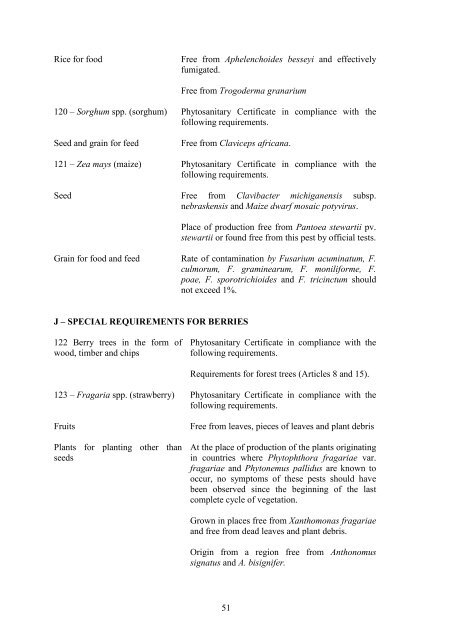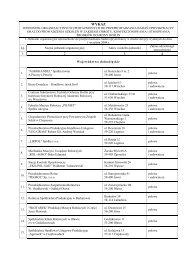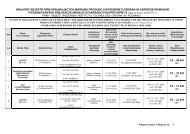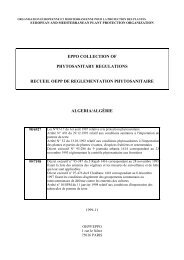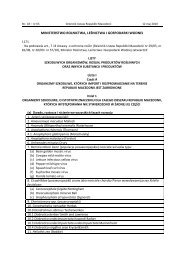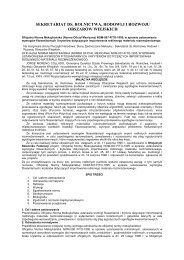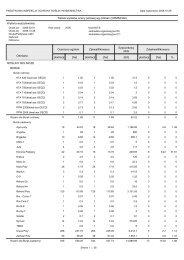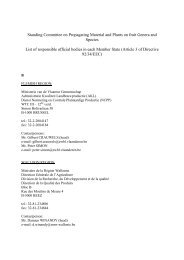eppo collection of phytosanitary regulations recueil oepp de
eppo collection of phytosanitary regulations recueil oepp de
eppo collection of phytosanitary regulations recueil oepp de
You also want an ePaper? Increase the reach of your titles
YUMPU automatically turns print PDFs into web optimized ePapers that Google loves.
Rice for food Free from Aphelenchoi<strong>de</strong>s besseyi and effectively<br />
fumigated.<br />
Free from Trogo<strong>de</strong>rma granarium<br />
120 – Sorghum spp. (sorghum) Phytosanitary Certificate in compliance with the<br />
following requirements.<br />
Seed and grain for feed Free from Claviceps africana.<br />
121 – Zea mays (maize) Phytosanitary Certificate in compliance with the<br />
following requirements.<br />
Seed Free from Clavibacter michiganensis subsp.<br />
nebraskensis and Maize dwarf mosaic potyvirus.<br />
Place <strong>of</strong> production free from Pantoea stewartii pv.<br />
stewartii or found free from this pest by <strong>of</strong>ficial tests.<br />
Grain for food and feed Rate <strong>of</strong> contamination by Fusarium acuminatum, F.<br />
culmorum, F. graminearum, F. moniliforme, F.<br />
poae, F. sporotrichioi<strong>de</strong>s and F. tricinctum should<br />
not exceed 1%.<br />
J – SPECIAL REQUIREMENTS FOR BERRIES<br />
122 Berry trees in the form <strong>of</strong><br />
wood, timber and chips<br />
Phytosanitary Certificate in compliance with the<br />
following requirements.<br />
Requirements for forest trees (Articles 8 and 15).<br />
123 – Fragaria spp. (strawberry) Phytosanitary Certificate in compliance with the<br />
following requirements.<br />
Fruits Free from leaves, pieces <strong>of</strong> leaves and plant <strong>de</strong>bris<br />
Plants for planting other than<br />
seeds<br />
At the place <strong>of</strong> production <strong>of</strong> the plants originating<br />
in countries where Phytophthora fragariae var.<br />
fragariae and Phytonemus pallidus are known to<br />
occur, no symptoms <strong>of</strong> these pests should have<br />
been observed since the beginning <strong>of</strong> the last<br />
complete cycle <strong>of</strong> vegetation.<br />
Grown in places free from Xanthomonas fragariae<br />
and free from <strong>de</strong>ad leaves and plant <strong>de</strong>bris.<br />
Origin from a region free from Anthonomus<br />
signatus and A. bisignifer.<br />
51


